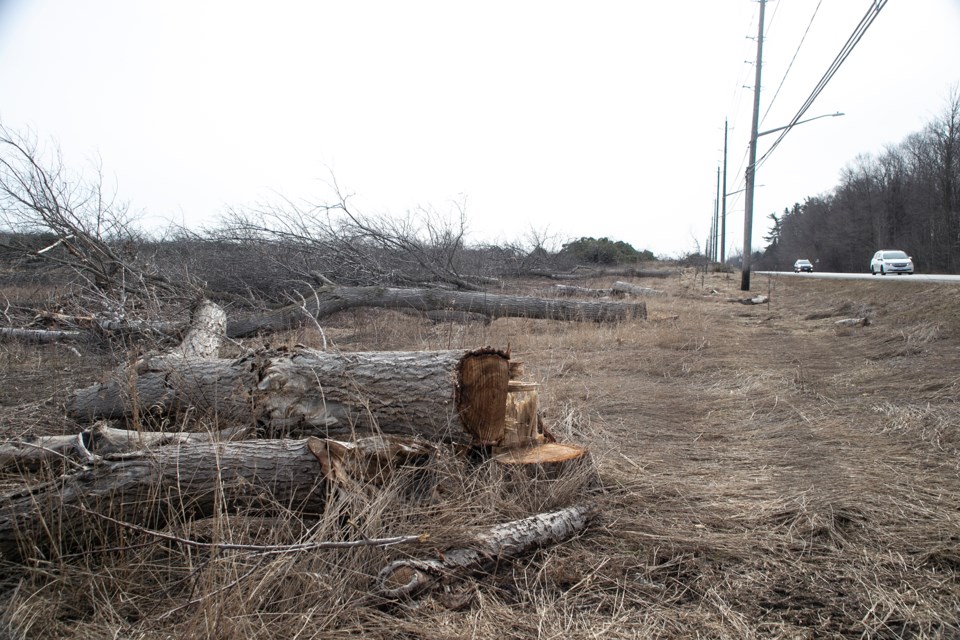A decades-long series of research projects has come to an end for a woodlot on Victoria Road and required the removal of 2,300 trees, says its lead researcher.
The 32-acre woodlot between College Avenue and Stone Road has been harvested and the wood is to be sold, but University of Guelph lead researcher for the project Naresh Thevathasan told GuelphToday the real value has been in the decades of research opportunities it provided.
U of G began its eco-forestry program in 1983 and 10 tree species were planted between then and 1987, said Thevathasan by phone on Tuesday.
The trees were planted to research intercropping – ways in which trees can be integrated into growing crops like corn, wheat, soybeans or barley between rows of trees to improve ecological sustainability.
“With some of the vegetable crops you need shade and then you can have two tree rows and grow them between them because you need partial shade,” said Thevathasan.
Over the past three-and-a-half decades researchers at the university have looked into just about every possibility with the eco-forestry project, including nutrient cycling, bird diversity, macrofaunal diversity, soil health, soil erosion control and how crop productivity changes over time.
“We have looked at several aspects over the past 35 years and I am happy to say that about 50-plus theses have come out from that research site and students from about 35 different countries,” said Thevathasan.
He should know. Thevathasan came to U of G from Sri Lanka in the late 80s to be a part of the eco-forestry program as a student and eventually took over as lead researcher after the retirement of prof. Andrew Gordon, who started the program.
“We have done all of the research in the last 35 years related to what we were planning to accomplish,” said Thevathasan.
The final step was to harvest the trees, calculate their value and determine how much carbon they have collected over the decades.
“The time has come and we are now trying to assess how much revenue a farmer can get if they plant a walnut versus red oak versus Norway spruce versus white ash,” said Thevathasan. “We are fulfilling the entire life cycle of the research.”
The eventual research paper that will come from calculating the carbon capture will be a landmark paper in Canada, said Thevathasan.
“There are lots of allometric equations for trees grown in the forest, but there are none for trees grown in agriculture ecosystems,” he said.
In total, about 2,300 trees have been harvested. In a news release the university noted that trees planted for research are exempt from the city of Guelph’s tree protection bylaw.
“University of Guelph staff in the Office of Research have been working with the City of Guelph to ensure the tree harvest complies with local by-laws,” said the news release.
